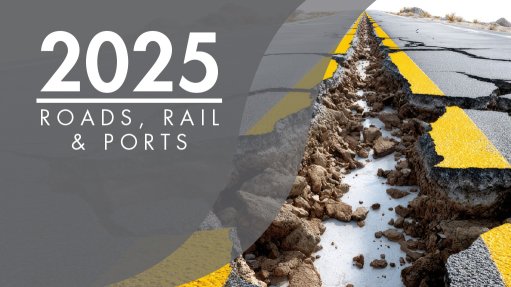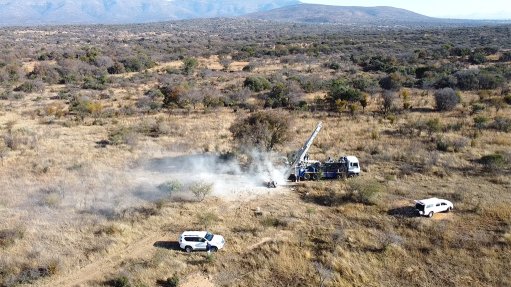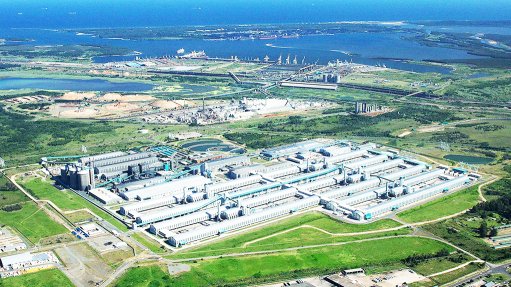Collaboration, digitisation, leadership key to enhancing health and safety initiatives

Industry experts unpack how to enhance collaboration to prevent workplace injuries and promote a culture of safety in this Creamer Media-hosted webinar.
Workplace-related injuries continue to remain a challenge in South Africa, but collaboration, digitisation and hands-on leadership can play an important role in promoting a culture of safety.
This was the topic discussed during Creamer Media’s Health and Safety webinar, on June 26.
Speaking on the panel, automation company Saryx Engineering co-founder and CEO Ingrid Osborne highlighted the role of digital tools in improving compliance and reducing administrative burdens, describing digitisation as the bridge between safety policy and safety culture.
She explained that digital solutions, such as the HSEC Online solution championed by Saryx, can provide real-time visibility into compliance status, automate safety-critical workflows and ensure seamless contractor onboarding and verification.
She added that digital tools improved safety outcomes and reduced administrative overload. It improved audit readiness and supported a culture of accountability and continuous improvement.
“Digital online health and safety tools are placing control and visibility directly into the hands of every single person on site, just as online banking did for everyday customers, and this really creates a safer [workplace.] It creates more awareness and a more efficient workspace and it's powered by real-time intelligence,” she added.
Speaking on compliance gaps in the mining sector, Saryx Engineering safety, health and environment risk and compliance specialist Daniel Weber explained that common gaps in the sector include inadequate risk assessment processes, poor incident reporting, poor contractor management, inadequate supervision and accountability, poor health surveillance, inadequate training and competency, as well as a lack of understanding of legal requirements and inadequate updating of those requirements.
With this in mind, he argued that modernisation could help address these issues.
This includes integration of technology, and implementation of management systems such as International Organisation for Standardisation (ISO) systems, health and wellness programmes, as well as training and competency programmes and development programmes.
At the core of these interventions is technology, particularly the use of digital platforms, real-time monitoring systems, as well as automated and remotely-operated machinery.
“One of the key aims, or core things of health and safety, is to prevent harm, and the use of technology assists this dramatically. For me, a core ingredient to this is the use of online digital platforms,” he said.
Weber pointed out that platforms such as the HSEC Online system could be used to address these compliance gaps and assist mining companies and contractors to streamline their compliance and also assist personnel to better manage the large administrative burden that is placed on them.
While innovation in safety systems is important, he expressed, there is often a reluctance to adopt these technologies owing to misinformation and distrust.
With regard to the importance of leadership, Rand Mutual Assurance social insurance head Dr Jessica Hutchings argued that companies should go beyond compliance and look at best practices and other interventions.
She argued, however, that moving towards a proactive safety culture depended on good leadership and how it was inculcated within an organisation.
Hence, she noted the importance of educating senior management on their responsibilities regarding health and safety.
“It’s really important that health and safety and wellness, and we call it prevention, is led from the front. It's at the forefront of everything that a company should be doing. At the end of the day, the employees are the most important assets,” she expressed.
“Behaviour-based safety, if done appropriately and correctly, without it being punitive, had a big role to play, and especially in South Africa,” she added.
Meanwhile, Minerals Council South Africa safety and sustainable development head Dushendra Naidoo noted that 30 fatalities had been recorded in the mining industry to date this year compared with 19 during the same time last year – a 58% regression.
Despite a 58% regression, he posited that achieving zero harm in the sector was still possible.
He pointed out that the Minerals Council had evolved its Khumbul'ekhaya programme to a new version after conducting a comprehensive analysis of industry incidents over the past decade.
The new version of the programme focusses on tangible action centred around core pillars such as CEO-led safety and health commitments, risk management through critical controls and data-driven safety initiatives in the mining sector.
“We use those insights to formulate tangible aspects that led to the development of Khumbul'ekhaya version two . . . a transformational safety and health strategy,” he said.
Article Enquiry
Email Article
Save Article
Feedback
To advertise email advertising@creamermedia.co.za or click here
Press Office
Announcements
What's On
Subscribe to improve your user experience...
Option 1 (equivalent of R125 a month):
Receive a weekly copy of Creamer Media's Engineering News & Mining Weekly magazine
(print copy for those in South Africa and e-magazine for those outside of South Africa)
Receive daily email newsletters
Access to full search results
Access archive of magazine back copies
Access to Projects in Progress
Access to ONE Research Report of your choice in PDF format
Option 2 (equivalent of R375 a month):
All benefits from Option 1
PLUS
Access to Creamer Media's Research Channel Africa for ALL Research Reports, in PDF format, on various industrial and mining sectors
including Electricity; Water; Energy Transition; Hydrogen; Roads, Rail and Ports; Coal; Gold; Platinum; Battery Metals; etc.
Already a subscriber?
Forgotten your password?
Receive weekly copy of Creamer Media's Engineering News & Mining Weekly magazine (print copy for those in South Africa and e-magazine for those outside of South Africa)
➕
Recieve daily email newsletters
➕
Access to full search results
➕
Access archive of magazine back copies
➕
Access to Projects in Progress
➕
Access to ONE Research Report of your choice in PDF format
RESEARCH CHANNEL AFRICA
R4500 (equivalent of R375 a month)
SUBSCRIBEAll benefits from Option 1
➕
Access to Creamer Media's Research Channel Africa for ALL Research Reports on various industrial and mining sectors, in PDF format, including on:
Electricity
➕
Water
➕
Energy Transition
➕
Hydrogen
➕
Roads, Rail and Ports
➕
Coal
➕
Gold
➕
Platinum
➕
Battery Metals
➕
etc.
Receive all benefits from Option 1 or Option 2 delivered to numerous people at your company
➕
Multiple User names and Passwords for simultaneous log-ins
➕
Intranet integration access to all in your organisation















